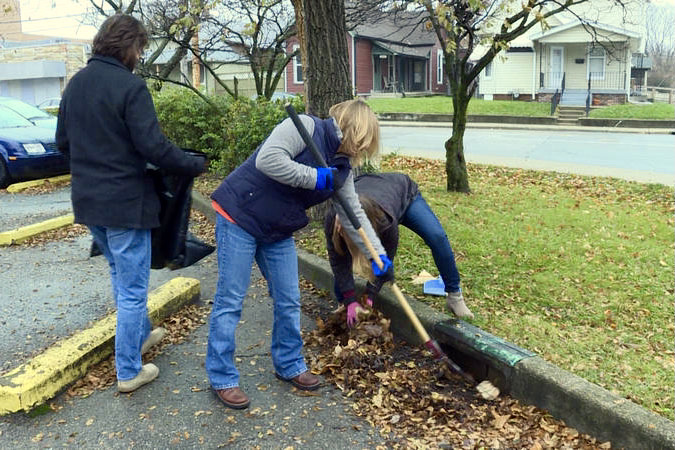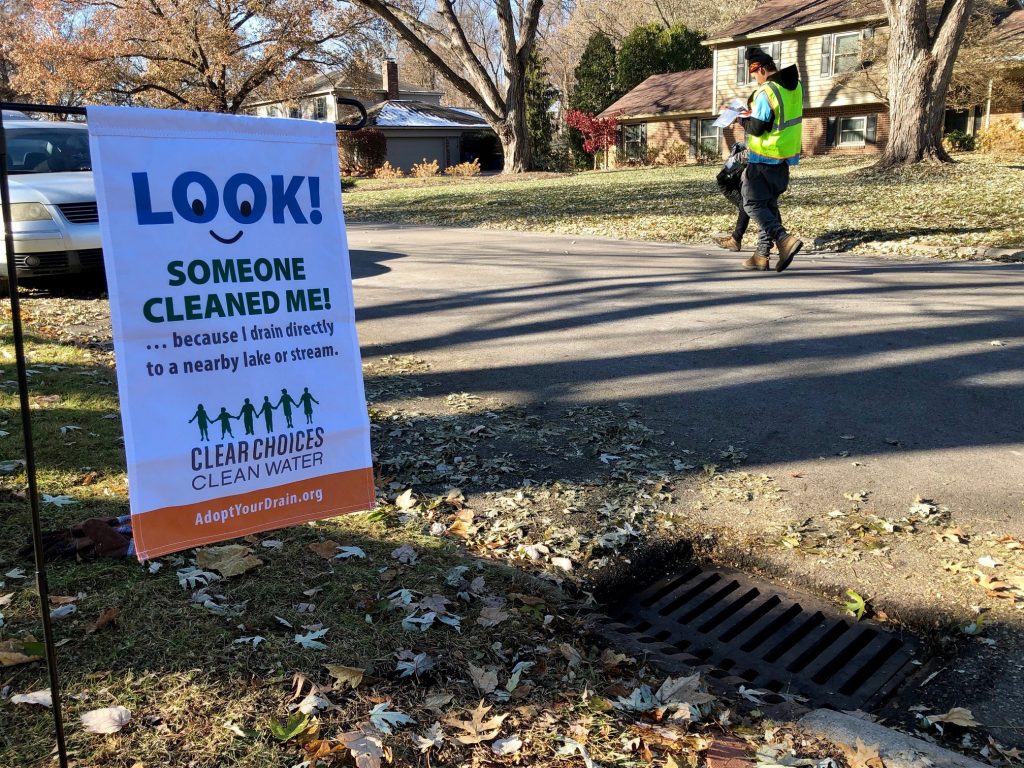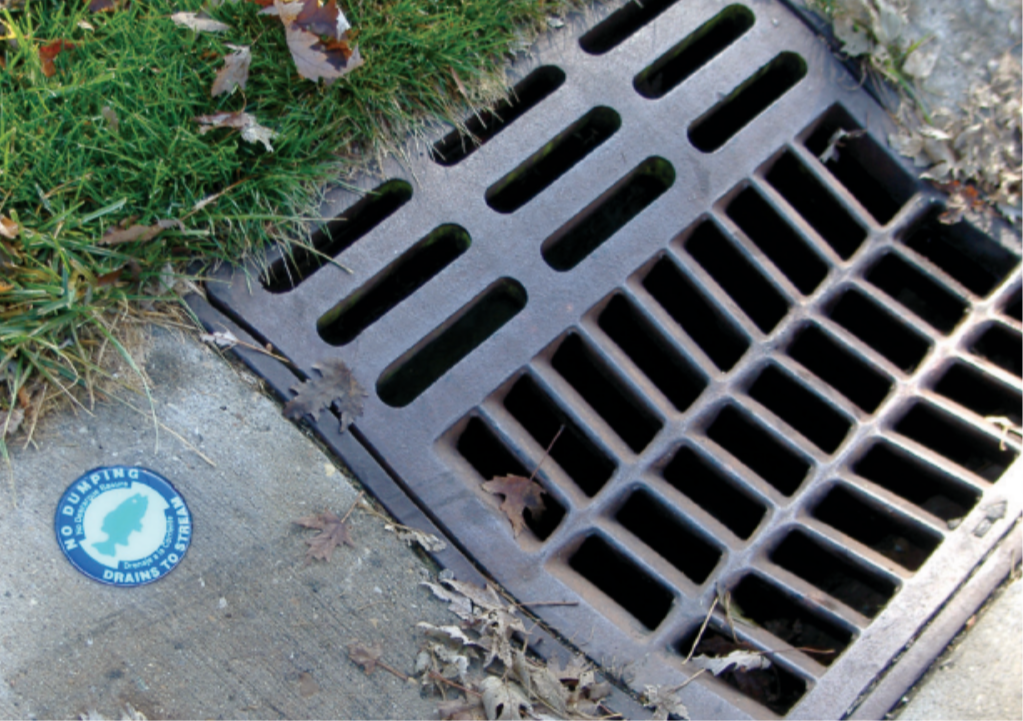Adopt a Storm Drain
Many communities have programs that allow individuals to help maintain local storm drains. Even if your community doesn’t have a formal program, you can still do your part for water quality by adopting a storm drain with Clear Choices. Learn what’s involved below. Afterwards, you might consider hosting a StormWater Action Team (SWAT) event or starting a Local Campaign.
Why are Storm Drains Important?

Storm drains are a normal part of street and parking lot infrastructure. They are designed to collect and redirect excess runoff from rainfall or flooding. Located most often along street and sidewalk curbs or set off of the road in a drainage area, storm drains move water off the street and into a piping system below ground.
In some areas, usually older parts of cities, the storm drain system is connected to the sanitary sewer system. This means the water from both systems is combined and treated in a local wastewater treatment facility before being released into waterways. But in many cases, storm drains are part of a separate pipe collection system that flushes stormwater – without any treatment at all – directly into streams, rivers, and lakes (and ultimately the ocean). Both systems can cause flooding downstream and contribute significant pollution (oil, fertilizers, pet waste, yard debris, sediment, E. coli, etc.) to our waterways.
Take an action pledge to keep a storm drain clean in your neighborhood! Here’s what’s involved:
Step 1: Keep it Clean
Keep all leaves, limbs and debris cleared away from drains. When debris clogs drains, water can’t flow into the drain properly, resulting in ponding and flooding. Also, any material that enters a storm drain will end up in a local stream if the pipe is not directed to the wastewater treatment plant (most are not). There are the usual offenders that end up in storm drains: pet waste, oils from parking lots and driveways, lawn fertilizers, and street litter. But even natural materials such as leaves and grass clippings, when collected over the whole system, can degrade water quality. Only rain in the drain!
Remember to check the drain BEFORE a rain event! Use a rake or broom to keep leaves and other materials clear of the drain. (Leaves and lawn clippings can be bagged, composted or used for mulch in your yard!) In winter, snow and ice can block the drain, so when possible, remove snow and ice to create a 1 foot path along the curb leading to the drain. Pollutants from yards and streets accumulate in the snow and ice over the winter and then rush into drains and nearby streams during spring thaws.

Step 2: Map It
When you pledge to adopt a drain through this site, you will be asked to provide the location of the drain you are adopting. Adding your storm drain encourages others to adopt a drain near them! This also helps us see what areas may be in need of storm drain cleanup.
You can even challenge your neighbors to adopt the drain nearest their houses to help spread this important practice.
Step 3: Mark It
Some communities have storm drain markers (adhesive decals) while others actively paint stencils on local drains in order to bring attention to them. Mark your storm drain so it catches someone’s attention before they dump anything down the drain. Not everyone knows that what goes down our storm drains ultimately end up in our waterways, your added marker could help someone understand!

Step 4: Report a Polluter
If you see someone dump anything into the street or directly into a storm drain, report it to your local public works department or to the Complaint Coordinator at the Indiana Department of Environmental Management at (800) 451-6027, ext. 24464. Pouring anything into a drain is not only bad for water quality and wildlife—it is illegal in most places.
Find your local Report-a-Polluter contact. Visit this Indiana Department of Environmental Management webpage to learn more.